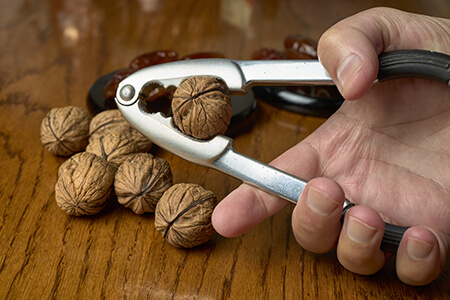This is a lesson summary. The full lesson can be viewed by purchasing an online course subscription.
Learning Objective
In this lesson we will learn about the different types of levers and how they provide mechanical advantage.
Learning Outcomes
By the end of this lesson you will be able to:
- Explain what a lever is and define the ‘effort’, ‘load’ and ‘fulcrum’.
- Define ‘class 1’, ‘class 2’ and ‘class 3’ levers, with examples.
- Explain what is meant by the terms ‘double lever’ and ‘compound lever’, with examples.
- Calculate the mechanical advantage of class 1, class 2 and class 3 levers.
- Distinguish between ‘force multiplier’ levers and ‘speed multiplier’ levers.
- Give examples of class 1, class 2 and class 3 levers in the human body.

(Image: Ricardo, Adobe Stock)
Lesson Summary
- A lever is a simple machine consisting of a rigid bar or rod that pivots about a fulcrum.
- The mechanical advantage provided by a lever is known as leverage.
- Levers are divided into three classes:
- In class 1 levers (first-class levers), the fulcrum is positioned between the effort and the load.
- In class 2 levers (second-class levers), the load is positioned between the effort and the fulcrum.
- In class 3 levers (third-class levers), the effort is positioned between the load and the fulcrum.
- Double levers are devices that consist of two levers using the same fulcrum.
- Compound levers are devices consisting of two or more levers, where the load of one lever acts as the effort of another.
- The mechanical advantage of a lever is given by the formula:
- The effort arm distance is the distance between the effort and the fulcrum.
- The load arm distance is the distance between the load and the fulcrum.
- Force multiplier levers increase the force applied to an object.
- They have a mechanical advantage greater than 1.
- Speed multiplier levers increase the distance (and therefore speed) that an object moves.
- They have a mechanical advantage less than 1.
- Class 1 levers can be force multipliers or speed multipliers.
- Class 2 levers are always force multipliers.
- Class 3 levers are always speed multipliers.
- The human body consists of many parts that function as levers, with class 3 levers being the most common and class 1 levers being the least common.

(Image: Anton Gepolov, Adobe Stock)
(Header image: SIN, Adobe Stock)

